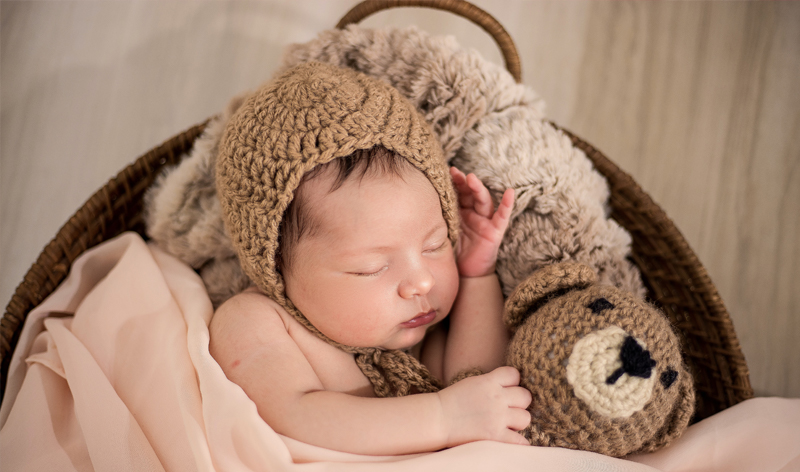Back to Sleep: How Your Newborn Can Sleep Safely

It’s no secret that babies sleep a lot (up to 18 hours a day sometimes) and this sleep is crucial for their growth and development. Because so much of their time is spent sleeping, it’s important to make sure your newborn is also sleeping safely. With around 3,500 babies dying annually from Sudden Infant Death Syndrome (SIDS) or suffocation during sleep, it is crucial to know what steps to take to provide the best and safest conditions for sleep. Prioritizing safety will help ensure healthy development and give you some peace of mind as you navigate life with a newborn.
How the Baby Should Sleep
First and foremost, babies should always be put to sleep on their back, especially for the first year of life. Side or stomach sleeping can be more dangerous for the baby as there is a risk of suffocation. Sleeping on the back does not carry this risk, nor an increased risk of choking. If, over time, your baby rolls over and back comfortably, you don’t have to fix their position, but always make sure to put them down for sleep on their back.
Additionally, be sure to place your newborn on a firmer mattress or surface instead of blankets that are soft and may block the baby’s mouth and nose if they happen to roll over. You should also have a clean sleeping area for the baby that is free of any toys, blankets, pillows, or even crib bumpers which could also have the potential to restrict their breathing.
You also don’t want the baby to overheat. Make sure your baby is not sweating by making sure the air temperature is not too hot in the room and by having them wear light clothes to bed. These should be simple clothes without strings or pieces that could get tangled. Additionally, when your baby starts to roll over, you should stop swaddling them.
Where the Baby Should Sleep
The best place for a baby to sleep is in an enclosed place such as a crib or a bassinet. It’s a good idea to put the baby’s bed in the same room that you sleep, so you can more easily monitor and attend to them during the night. If a crib is too big to fit into your bedroom, a bassinet is a great alternative for a newborn and can be easily moved to different rooms.
Sharing a bed with your baby, however, is something doctors and professionals strongly advise against. It can be especially dangerous for babies under four months old, premature infants, or if you sleep on a soft bed with fluffy blankets.
A baby monitor may also be something you want to consider using while your baby sleeps. However, if you live in a small or one-story house, or your baby sleeps in the same room as you, you may not need one until later.
Other Tips to Minimize Risk
Breastfeeding can also encourage safe sleep for infants as it reduces the chance of SIDS. For this reason, it is good to keep breastfeeding for at least 4-6 months during the highest likelihood of SIDS.
Having scheduled “tummy time” is also important for your newborn as they strengthen their neck and chest muscles, which will help them avoid suffocation from rolling onto their stomach at night.
Finally, keeping your baby’s health checkups and vaccines up-to-date and talking to your doctor about any concerns will help you understand your baby’s needs better not only so that they can get better sleep, but so that you can also sleep worry-free knowing they are safe and loved.
